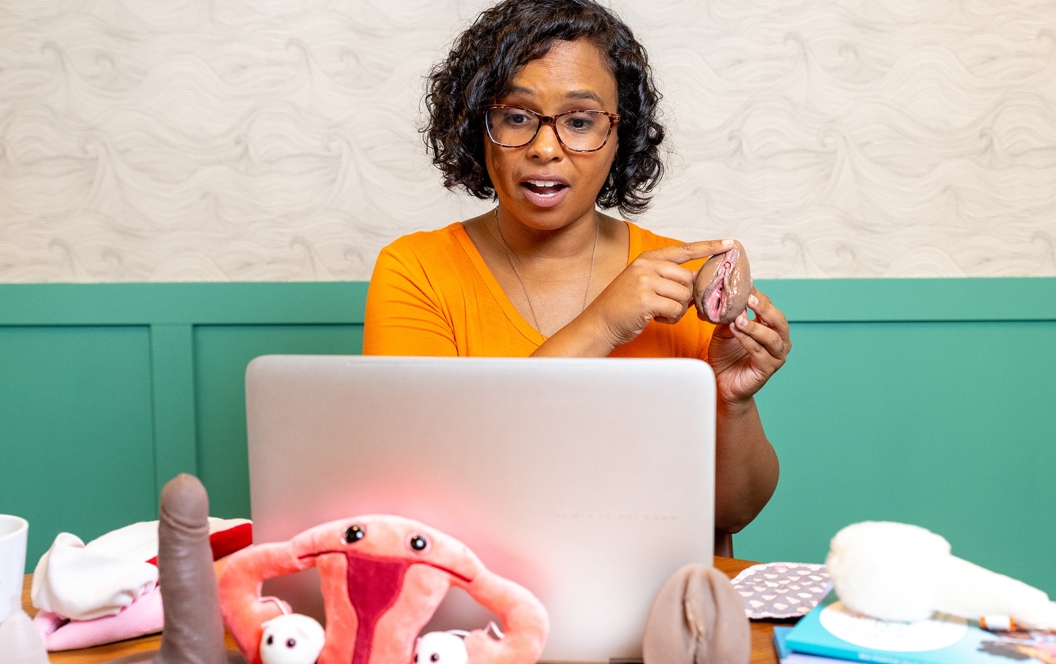Conversations about sex can be a bit awkward, but Melissa Pintor Carnagey, LBSW, founder of Sex Positive Families, knows they don’t have to be.
By Melissa Pintor Carnagey, LBSW, founder of Sex Positive Families, Photos courtesy of Melissa Pintor Carangey
Melissa Pintor Carnagey is a renowned sexuality educator, best-selling author and leading national voice for sex-positive education. Her work with Sex Positive Families has been featured in Huffington Post, Parents magazine, CNN and The New York Times. Her work reaches thousands of families around the globe via an engaged social media following and monthly live workshops. Sex Positive Families is guided by the belief that all children deserve holistic, comprehensive and shame-free sexuality education so they can live informed, empowered and safer lives. Carnagey is confident that work starts in homes.

Children have amazing curiosities, and it’s our job, as caring adults and parents, to create a brave space for their questions to land. But what happens when the thing they’re curious about relates to topics that are often considered taboo, like bodies, reproduction or sex?
These topics are not inherently awkward, but sometimes in our homes and communities, we can make it feel that way by how we react. If we’ve hushed, winced, nervously laughed or flat-out avoided sexual health talks, children pick up on this early and they adapt. This can create a learned discomfort. Which isn’t helpful when trying to raise informed, empowered and safer young people.
The good news is that we have the opportunity to shift the taboos for our children. Knowledge is power, and we want young people to be really powerful. To help you on that path, here are five steps for navigating kids’ sexual health questions, without shame or taboo.
1. Don’t panic!
How we react to a child’s curiosities can influence whether they continue to come to us. We want to get to a place where talking about bodies, identity, consent, relationships and sex is as normal as talking about the weather. Remember that any questions they bring your way are a positive sign that they see you as a safe space and trusted resource.
2️. Respond in an affirming way.
A great go-to response is, “That’s a great question! I’m so glad you asked.”
Using affirming statements reassures a child that their curiosities are always welcomed. No matter the topic they bring to you. This is critical, especially when building the kind of trusted connection that makes them more likely to speak up if anything unsafe or concerning happens. Even in the face of the most seemingly “awkward” curiosities, you want to ensure they know that no topic is taboo.
3️. Get curious, not investigative.

So you’ve established with them that you appreciate their question. Now send a curiosity right back their way. Something like, “What have you heard about (topic/term)?” or “What do you think (topic/term) means?” Not only does this give you at least a few more seconds to gather your thoughts, but their response can offer more context that helps frame the information you offer next. It can also lead to you learning that their question was influenced by a concerning situation or experience that needs your follow-up. Try to avoid any accusatory or investigative questions that can cause a child to feel like they’re being punished or shamed. Steering away from questions that begin with “Why…” is one way to minimize this.
4️. Fight the urge to run.
You’re not on fire. If it feels like you are, that’s totally normal. Many of us did not grow up with open, shame-free sexual health talks, so it can feel harder to model something we didn’t experience. Take a breath. Remember this is a teachable moment. Avoiding it can send the message that asking these questions is not okay, which can shut the child down in the long run. You both have an opportunity for connection through this experience. It’s also totally okay to acknowledge any discomfort you’re feeling, if needed, so your child doesn’t interpret it incorrectly.
5. Answer the question.
You’ve made it this far; now it’s time to give them what they came for using some considerations like their age, unique personality and the setting you’re in at the moment. If they’re old enough to ask, they’re old enough for an answer. The information you give to a 6-year-old will be different from a teen. Some kids love detail and deep dives while others lose interest quickly.
Your response can be anything from simple to scientific to anecdotal. What you don’t know, you can look up together or let them know you will look into the answer and get back to them. Their questions could also be solved by checking out a book or resource on the topic together, sharing facts in fun ways. Keep in mind there is no one perfect answer or script when talking to your child. It’s the taboo-free connection that you foster that is most valuable.
When it comes to answering our kids’ curiosities about sexual health topics, they don’t need us to be encyclopedias. They need us to be present, available and supportive as they’re navigating these very human things. Your responses lay the foundation of many talks ahead as they grow along their sexual health journey.
For a list of resources visit Sex Positive Families.


